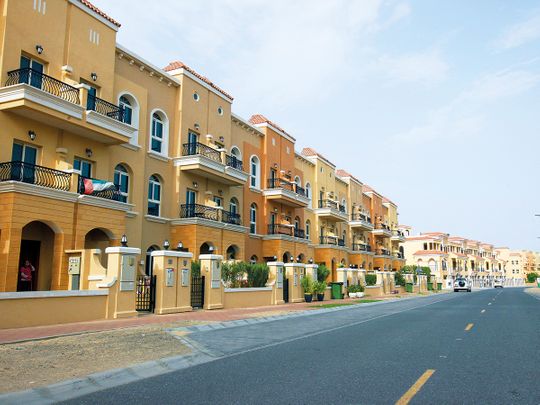
Dubai: Rents at some of Dubai’s most budget-friendly residential locations – Jumeirah Village, Discovery Gardens and International City have dropped to levels last seen in 2011.
For instance, a one-bedroom unit at Jumeirah Village – one of the most searched for spots these days – can be rented for around Dh35,000, which was what it was in 2011 when it first made an appearance as a residential option. At the time, the Dubai property market was slowly emerging from the aftermath of the 2008-09 Global Financial Crisis. (Rents started shooting up from 2011 and reached their peak during 2014-15.)
In 2017, these one-bedroom units at JVC were carrying an average rental of Dh60,000.
At Discovery Gardens, it’s Dh37,500 for a typical one-bed, against the Dh38,000 a decade ago, according to the latest UAE real estate update from Asteco, which this week confirmed its acquisition by an Aldar Properties division. The rent was Dh65,000 in 2016 and Dh55,000 in 2017, according to the report.
- in Dubai, 'Committed projects, particularly those at an advanced stage of construction, are expected to continue unabated," according to Asteco. "This is largely due to construction-linked and post-completion payment plans."
- New project launches may pick up slightly but this is highly dependent on the speed of economic recovery.
Sharjah options
At some Sharjah neighbourhoods, the rental declines in Dubai – and the affordability it creates in Dubai – have been amplified. Rents in Sharjah are now at levels even below what they were in 2011.
According to Asteco, a one-bedroom units in the Al Nahda area of Sharjah is available for Dh23,500 against 2011’s average of Dh28,000. Corniche-based apartments start from Dh25,000, against the Dh28,000 or so a decade ago.
Even then, "As restrictions on movement have eased and a sense of normality returns, we expect relocations from Sharjah to Dubai to pick up again, particularly due to Dubai’s continuous increase in supply and decline in rental rates."

Will 2021 see more drops?
“Further pressure on rental rates across all asset classes is expected for the year until the economy improves/recovers,” the report adds.
Last year, apartment rents were down by an estimated 14 per cent across Dubai, continuing the dips from 2018 onwards. But during the final three months of last year, there were no further declines, with some locations actually seeing gains.
This could be attributed to tenants making switches to newer and popular locations with more space and other features. Apart from lower rents, tenants planning to shift were also seeking out those landlords who were willing to thrown in a few add-nns, such as rent-free periods, monthly payment options, and even free use of the air-conditioning.
There are recently completed buildings in freehold locations where different landlords are offering varying rents to likely tenants. And dropping them further if they see tenants are willing to sign on for that little extra.
The other big plus – from a tenant perspective – is the promise of no rental increases for two to three years.
Those landlords who fail to see what’s happening will have a tough task on their hands. “Tenant retention will become increasingly important and can be achieved through competitive rates/incentives,” the report adds.

There have been a number of positive reports suggesting that the economy is slowly moving into a recovery phase. However, given new lockdown restrictions in many parts of the world, it is widely perceived that the full
economic impact and the pace of recovery is still uncertain, and will ultimately be influenced by a range of factors, many outside of the UAE’s borders
New homes, new pressures
Asteco’s estimates are that 34,500 new homes were delivered in 2020, of which nearly 25,000 were apartments. This is broadly in line with what other consultancies had come out with. It will keep the pressure on rents across most locations, more so if another 40,000 plus new homes are delivered this year.
Dubai landlords will be watching closely whether they can try and access more tenant traffic from Sharjah. “Contrary to previous years, when Sharjah recorded ample migration to neighbouring Dubai due to growing supply and reduced rental rates,” Asteco report notes. “Tenants opted to negotiate existing rental rates/lease terms or move locally, predominantly due to the COVID-19 lockdown restrictions.”
Awaiting the next upturn
"Whilst the downward trajectory in the real estate market for the short-term is unavoidable due to strained economic/market conditions and the expected supply glut, the medium and long-term outlook for the UAE is more encouraging," said John Stevens, Managing Director of Asteco. This will be "fuelled by recovering oil prices (a key export for the UAE), forecasted GDP growth, a pro-active government response and clear focus on economic progress and sustainability".








